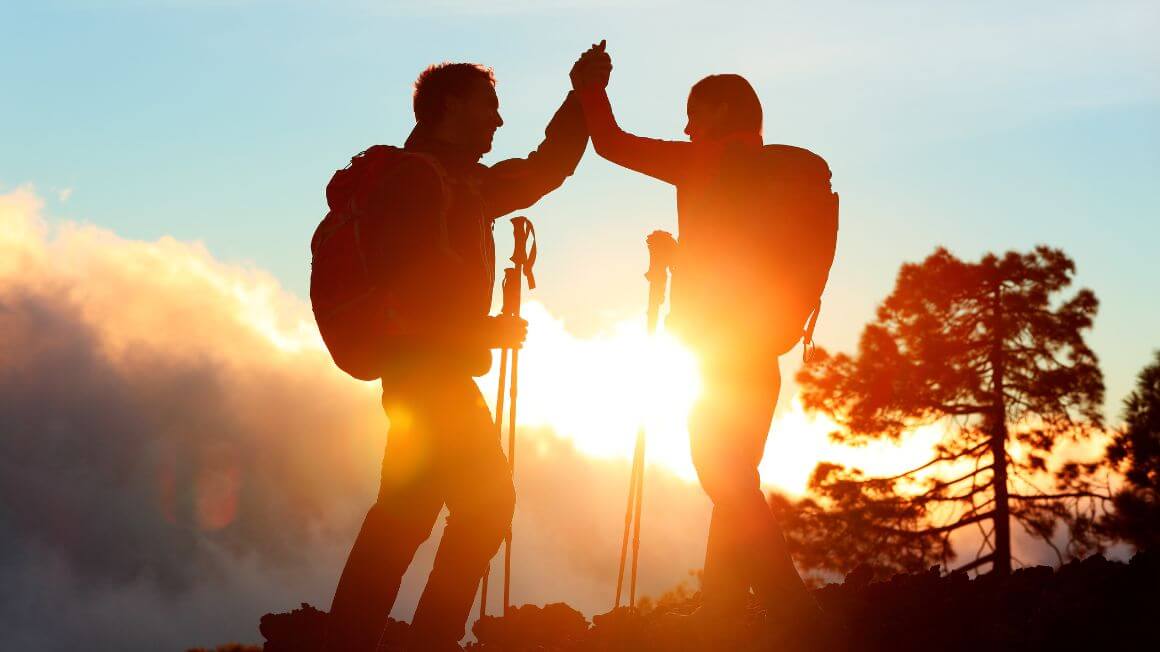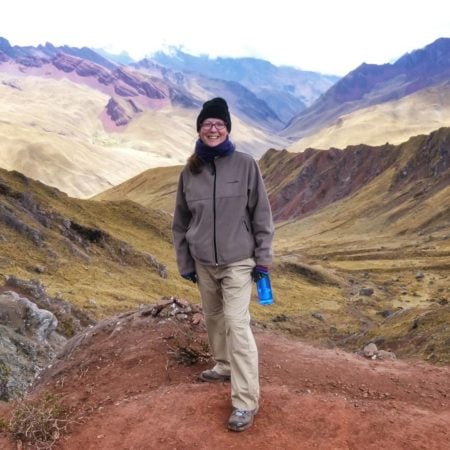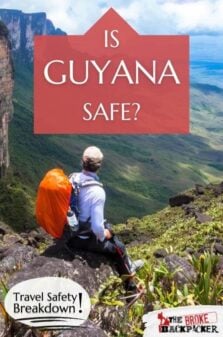An undiscovered gem of a country in South America – and the only English-speaking nation on the continent, at that – Guyana is bordered by Suriname, Brazil, Venezuela and the Atlantic Ocean. Think dense rain forests, savanna, and sandy beaches: it’s a natural wonderland.
In fact, Guyana boasts one of the highest levels of biodiversity in the world and, unlike many of its neighbours, over 70% of its natural environment remains intact. For anybody looking for a fresh, off the beaten track place to explore, Guyana is basically a paradise.
However, it isn’t always what we’d call “paradise”. Safety issues in urban and rural areas, as well natural threats like the weather and insect-borne diseases, can make it a risky place to explore – especially if you’re not used to that sort of environment.
As such, we’ve crafted this guide to staying safe in Guyana to tell you everything you need to know about this little known nation, from how to get around to how to avoid crime hotspots and whether or not it’s safe for female travellers – we’re here to help.

Unlock Our GREATEST Travel Secrets!
Sign up for our newsletter and get the best travel tips delivered right to your inbox.
- How Safe is Guyana? (Our take)
- Is Guyana Safe to Visit? (The facts.)
- Is it Safe to Visit Guyana Right Now?
- Guyana Travel Insurance
- 21 Top Safety Tips for Traveling to Guyana
- Keeping your money safe in Guyana
- Is Guyana safe to travel alone?
- Is Guyana safe for solo female travellers?
- Is Guyana safe to travel for families?
- Is it safe to drive in Guyana?
- Is Uber safe in Guyana?
- Are taxis safe in Guyana?
- Is public transportation in Guyana safe?
- Is the food in Guyana safe?
- Can you drink the water in Guyana?
- Is Guyana safe to live?
- How is healthcare in Guyana?
- FAQ about Staying Safe in Guyana
- Final thoughts on the safety of Guyana
- Buy Us a Coffee!
How Safe is Guyana? (Our take)
You might be wondering “Why is Guyana so dangerous?” Well, Guyana has a lot going for it, but when you first think about it, this isn’t a place that springs to mind as one of the safest in the world. That’s probably just because it’s an under-travelled place, overshadowed by more popular South American destinations.
It’s true that there are some things that may spring up when you’re there. From petty crime around the capital, Georgetown, and the remote probability of violent crime, to some seriously hair-raising road safety (or lack of it) and natural risks such as malaria and dengue fever.
Guyana isn’t the sort of place you just wander around without planning your trip, but it can totally be enjoyed – especially if you are travelling in a group, or as part of a tour.
Even then, a little common sense, keeping your wits about you, and some definitive experience of travelling off the beaten path destinations will put you in good stead of keeping safe in Guyana.
Most visits, however, are trouble-free. Even if crime rates are relatively high and the police are somewhat ineffective.
With that in mind, let’s get into the statistics and find out what makes Guyana tick.
There is no such thing as a perfect safety guide, and this article is no different. The question of “Is Guyana Safe?” will ALWAYS have a different answer depending on the parties involved. But this article is written for savvy travellers from the perspective of savvy travellers.
The information present in this safety guide was accurate at the time of writing, however, the world is a changeable place, now more than ever. Between the pandemic, ever-worsening cultural division, and a click-hungry media, it can be hard to maintain what is truth and what is sensationalism.
Here, you will find safety knowledge and advice for travelling Guyana. It won’t be down to the wire cutting edge info on the most current events, but it is layered in the expertise of veteran travellers. If you use our guide, do your own research, and practise common sense, you will have a safe trip to Guyana.
If you see any outdated information in this guide, we would really appreciate it if you could reach out in the comments below. We strive to provide the most relevant travel information on the web and always appreciate input from our readers (nicely, please!). Otherwise, thanks for your ear and stay safe!
It’s a wild world out there. But it’s pretty damn special too. 🙂
Is Guyana Safe to Visit? (The facts.)
Guyana is a fascinating country made up of six distinct ethnic groups: Indian, African, Amerindian, European, Chinese and those of mixed ancestry. However much like its neighbour, Suriname, Guyana is not only rich in cultural diversity. It’s also rich in biodiversity.
As we mentioned already, 70% of the country’s natural environment remains pristine, which is awesome! There are 814 species of bird, a diverse selection of mammals and a whole ton of plant life. There are even mountains to climb here, too.
Naturally (pun intended) there is a lot to attract tourists, the numbers of which have been increasing in recent years.
From January 2017 to January 2018, the number of tourists to Guyana increased by 16%. By the end of 2018, Guyana had welcomed 286,732 arrivals, an increase on the previous year total of 247,330.
Visitors numbers, in general, are up. People are coming for business as well as tourism now, and for the first time, it is seeing significant increases in visits from the US, Europe and other Caribbean countries.
Basically tourism is growing as more and more people report back and shout about Guyana being the awesome destination that it is.
However, crime levels remain high. Armed robberies, for example, are a regular occurrence, especially in shopping areas and business districts in Georgetown.
In 2012, the murder rate in Guyana was 17 per 100,000 of the population. In 2013, that rate increased to 24 per 100,000, making it the 4th highest in South America, just behind Venezuela, Colombia and Brazil.
When we look at the Global Peace Index (a yearly study measuring a country’s stability, equality and safety) for 2019, Guyana places 92 – fairly near the bottom – with Trinidad and Tobago (93) and Cuba (91).
However, the study also praises its “marked reductions in the homicide rate”.
Want to save money on accommodation?
The Broke Backpacker is supported by you. Clicking through our links may earn us a small affiliate commission, and that's what allows us to keep producing free content 🙂 Learn more.
Enjoy 15% OFF on stays ALL around the world.
Is it Safe to Visit Guyana Right Now?
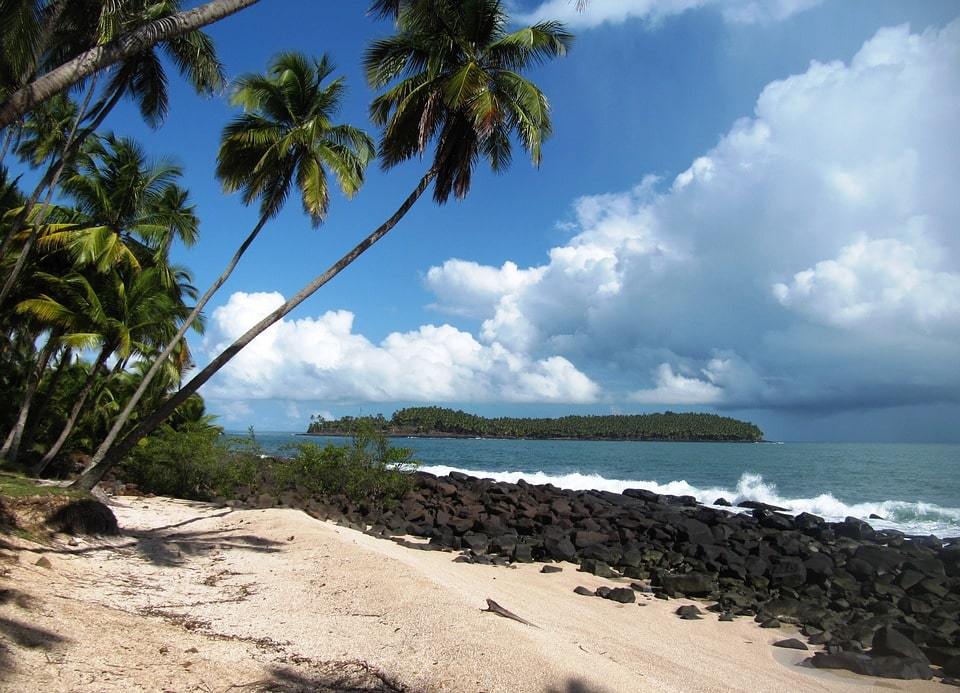
When people head to Guyana, most of the time their visits are trouble-free. However, there are some safety issues currently ongoing that some visitors may face.
The crime levels, though the homicide rates have reduced, are still high. Petty crime is a big issue and a natural worry to travellers. Armed and violent robberies can regularly occur.
Muggings can take place in the middle of the day, with guns and/or knives being used as a threat. Being seen as a wealthy foreigner can make visitors a target.
Travel to and from Georgetown Cheddi Jagan International Airport while it’s dark can be a risky undertaking. Cars have been known to follow those leaving the airport and attack victims when arriving at their destinations. To avoid this, it’s best to have a safe and secure mode of transport to get you to and from the airport – especially at night.
Political unrest can be sparked easily, characterised by violence and large crowds gathering. It is important to avoid any sort of gathering for your own safety.
There are border disputes to consider, too. One is between Suriname and Guyana. Though “settled” by the UN in 2007, there remains a dispute over land in the New River Triangle area (southeast Guyana). Another is with Venezuela, with a controversial dispute over the legitimacy over the entire Venezuela-Guyana border.
Drug trafficking is a huge issue unlikely to be solved anytime soon. Staying away from any sort of drugs is imperative during your trip, as it just funds the problem.
Guyana also has natural issues. The country has two wet seasons (May-Jun. and Dec.-Jan.) and it is vulnerable to floods, with much of the coastal region being below sea level. Poorly maintained infrastructure, including drainage, means that heavy rainfall can cause flooding and travel issues.
ALWAYS sort out your backpacker insurance before your trip. There’s plenty to choose from in that department, but a good place to start is Safety Wing.
They offer month-to-month payments, no lock-in contracts, and require absolutely no itineraries: that’s the exact kind of insurance long-term travellers and digital nomads need.
SafetyWing is cheap, easy, and admin-free: just sign up lickety-split so you can get back to it!
Click the button below to learn more about SafetyWing’s setup or read our insider review for the full tasty scoop.
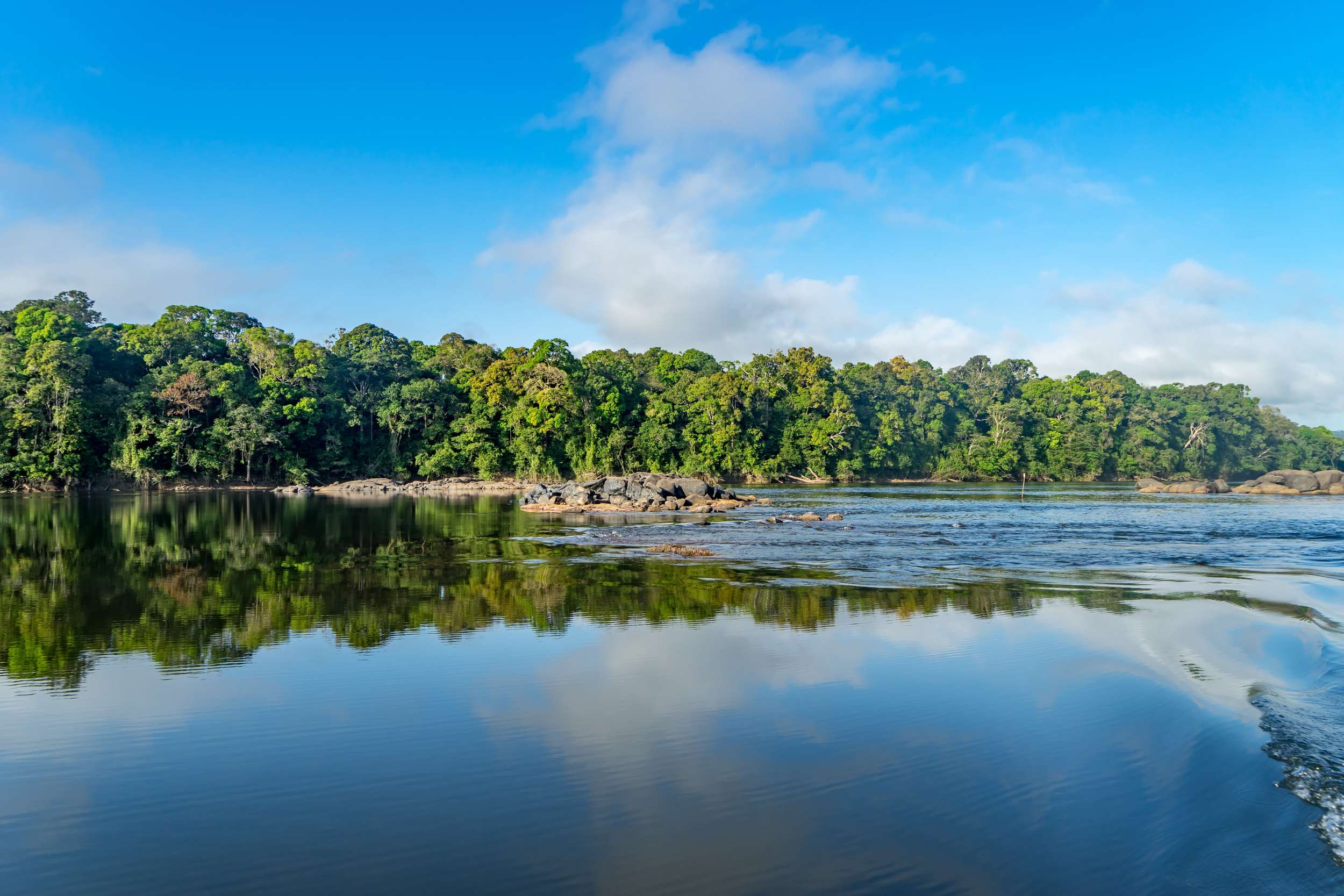
Though for most people, a visit to Guyana is totally trouble-free, it still pays to have a few pointers on how to travel around the country as safely as possible – so here are some safety tips.
- Leave your valuables at home – You don’t need to carry anything valuable around with you, in fact, the more you carry, the more you could lose. Carry your cash in a money belt.
- Make sure valuables in your accommodation are left in a safe place – If there’s a safe, use it, or perhaps think about leaving things you don’t want going missing in less obvious places than your baggage.
- Don’t be flashy – Avoid dressing in designer clothes, having your smartphone out constantly, or showing any obvious signs of wealth. It could make you a target.
- Do your research about areas you should avoid walking around – Places such as the Stabroek Market, Buxton, and Tiger Bay are all places where you should be particularly careful or just steer clear of altogether.
- Take care getting money out of ATMs – Guyana is largely cash-based, so you’ll need some physical cash, however, ATMs can be risky. Use ATMs inside banks rather than outside, but be careful of being followed once you leave.
- Don’t walk around Georgetown at night – Even in the daytime, walking alone away from the main areas can be risky.
- Take care when visiting the Botanic Gardens – It may be a better idea to go with an organised group instead of independently as there have been thefts.
- Don’t travel after dark – All long-distance journeys, or otherwise, should be done during daylight hours.
- Get yourself a sim card – A means of communication is important, especially if you are going to explore elsewhere in the country. You don’t want to be cut off.
- Bring a torch – Power cuts can happen and being in the dark is not good.
- Also, bring a rechargeable battery pack – Whether it’s for your phone or laptop (or both), one of these is very handy to have.
- Research your accommodation in advance – Quality varies in Guyana, so a good level of research into safety and security of your accommodation is important. Make sure to read reviews.
- Do not get involved in drugs – Trafficking and possession can result in lengthy prison sentences or fines.
- When leaving, pack your own luggage – Don’t leave it so anywhere can tamper with it.
- LGBT travellers take note: Homosexuality is illegal in Guyana. Public displays of affection, even holding hands, can lead to arrests. It is a good idea to seek advice and information from the LGBT travel community before travel.
- Keep away from public gatherings – Political demonstrations can turn ugly, so it’s best to avoid anything that looks like one.
- Use taxis to get around – Don’t put yourself at risk by walking everywhere. Taxis in Guyana are cheap, just make sure they’re licensed (we have a whole section on taxis later!)
- Be prepared – The “off the beaten track” areas of Guyana are really off the beaten track, so ensure you are adequately equipped.
- Protect yourself against mosquitoes – The presence of malaria and other diseases makes this imperative. Cover-up at dawn and dusk, use repellent with DEET and keep clear of standing water.
- Respect the heat – It can get super hot in Guyana, so make sure you’re hydrated and limit your time in the sun (cover-up, too).
- Know how to communicate – Guyanese people may speak English, but it doesn’t mean there aren’t things to know. The standard greeting is “Good day” (until night, when it’s “Good night”). Handshakes are normal between all genders; expect a lot of physical contact!
Although Guyana may be a very offbeat destination – that, and there may be a few safety issues to be aware of, too – visiting this seemingly far-flung country will be an adventure. Common sense very much applies, and travel experience is helpful, but if you just want to experience the country for what it is, travelling to Guyana as part of a group is a fine way to go as well.
Keeping your money safe in Guyana
Guyana certainly has issues when it comes to petty crime. From pickpocketing to bag snatching, your money could easily be at risk when you’re travelling in this South American nation.
This is one of those countries where a money belt really comes into its own.
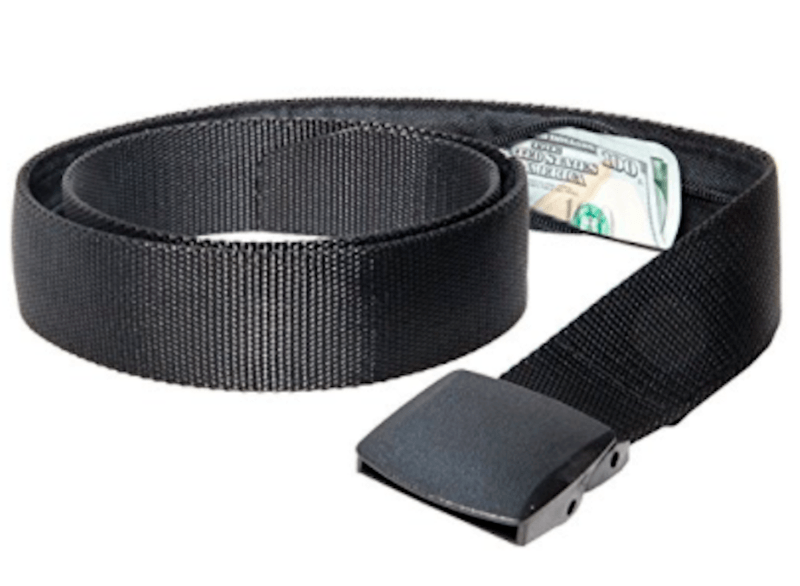
Though we’d recommend a money belt for pretty much anywhere in the world, in Guyana it could really save you the stress of potentially being a victim of crime. Being a largely cash-based society and having a relatively high level of crime, a money belt in Guyana is a must.
One of the best money belts out there by far, we love how simple this thing is: it looks and acts like a belt, it’s sturdy and it’s affordable. All you do is pop your cash for the day in the hidden zipper pocket and your hard-earned money is safe.
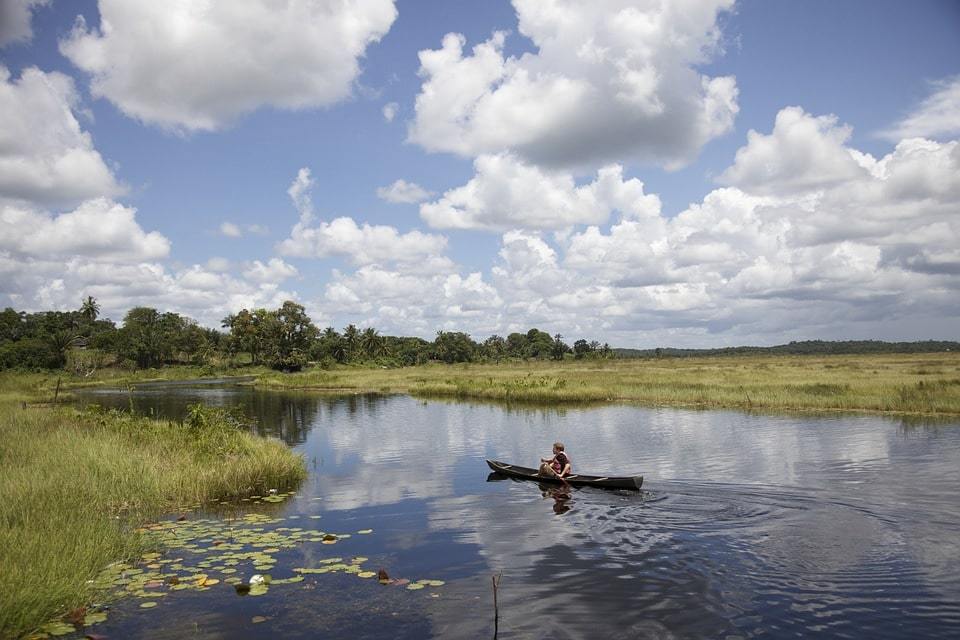
Travelling to Guyana by yourself is going to be like experiencing travel for the first time – almost. Depending on where you go, you may be cut off from normality and away from anything familiar.
However, if adventure is what you are looking for, Guyana is just waiting to be travelled by those who have travelled to similar destinations by themselves previously.
Needless to say, it’s best to go prepared, so here are our top solo travel tips for Guyana to help you stay safe when you’re there.
- Go everywhere with precaution – The high levels of crime mean going anywhere by yourself will make you something of a target for petty crime. Some places in Georgetown are safe to explore by yourself, but you should always have awareness of your surroundings.
- Have access to cash and funds – You need more than one way to get to your money. If your wallet gets stolen in Guyana, and all your cards and cash are in it, then you’ll have no way to get to your funds. Don’t keep everything (including physical cash) in one place and consider multiple bank accounts and even an emergency credit card. Or a money belt.
- Make sure you have enough cash – It’s a cash-based society, even more so in the really out of the way places in Guyana, as ATMs will be few and far between. Keep your budget topped up.
- Pack as lightly as possible – Not only is it advisable to pack light to make yourself less of a target, but also note that if you are flying in Guyana domestically the luggage per person weight is very limited. Check out our South America Packing List to know what essentials to pack.
- Be ready for discomfort – Travel into the interior of Guyana means basic conditions. Sometimes water won’t be easily accessible, things may not be as clean as you’d want, and it gets very hot.
- Join a tour or get a guide – Although travelling solo is often refreshing, you can get a lot more out of a country like Guyana if you go with a guard. Not only is it safer, but you will also get some insight into a local perspective of life in the country from your guide. Make sure that you do thorough research on the best companies, and only use reputable guides.
- Don’t be afraid to ask a local for help – Or even stop to have a chat! Most people in Guyana are friendly and hospitable. With that in mind, take people up on their offers and invitations for food and sharing culture.
- Be on your guard – People and their invitations may seem friendly, but you should use your own discretion when it comes to trust. Not everybody is going to have your best interests in mind, so trust your gut.
- Keep in touch – You may not always be able to be connected to the internet through your phone, but you should let people know when you are scheduled to have access to the internet so you can keep them up to date with your travels.
- Be aware of the amount of alcohol you are drinking – It’s fine to have a few drinks, but it’s all too easy to have one too many. Be cautious of who you’re with and how much you’re consuming. You don’t want to be left in bad company, or not get back to your accommodation safely.
Guyana is safe to travel solo, but that doesn’t mean it’s easy. You need to use the same level of common sense that you would use in so many other places in the world to stay safe as a solo traveller here.
A trip to Guyana by yourself should be well planned and thought out, which is why a group tour of the country is a nice idea because the company will do the hard work for you. You will get to meet other people too.
Is Guyana safe for solo female travellers?
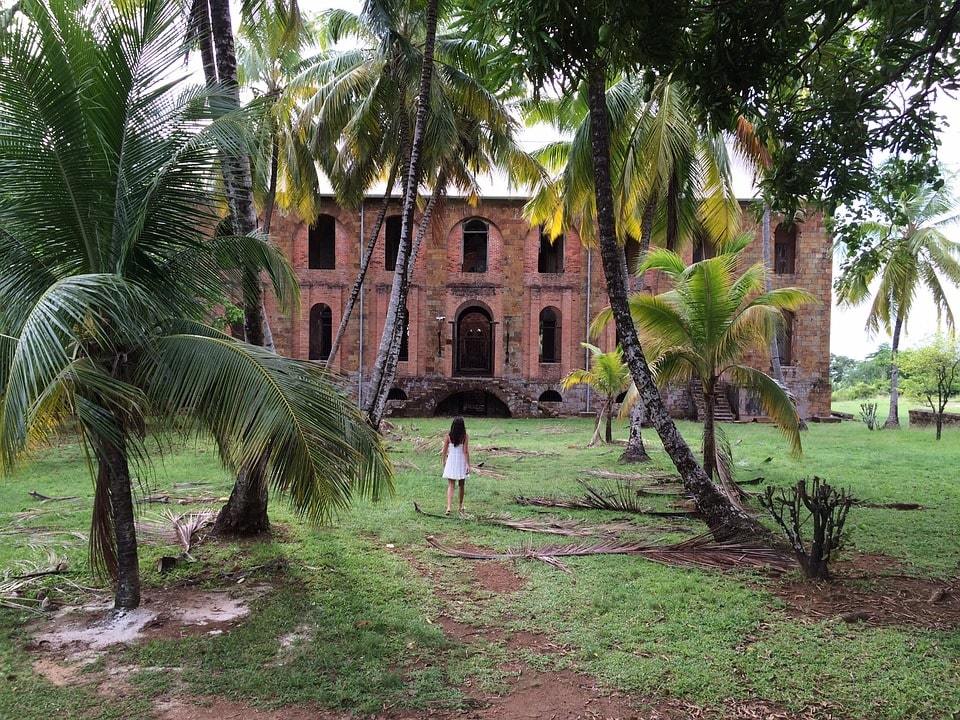
Guyana may not have the best reputation when it comes to crime, but that shouldn’t put female travellers off.
Of course, going it alone in a country like Guyana does come with a risk. It goes without saying that you shouldn’t go out by yourself after dark, or put yourself in risky situations. That does not mean that Guyana is a no-go for a solo female traveller, though.
It’s an incredible country that will leave you with some pretty amazing memories – and a kick-ass reputation as a traveller for going! Without further ado, here are some ways to keep yourself safe as a solo female traveller in Guyana.
- Research, research, research – Before you travel to Guyana, definitely research. You may want to travel wild and free, but knowing what lies ahead and what to expect from different destinations in the country, will help you prepare for the best and the worst.
- Do not wing it – Guyana is not the sort of place where you can just rock up and find a hostel. It’s not Brazil, it’s not even Colombia, it’s Guyana. You have to plan in advance, book accommodation and tours in advance and plan your itinerary very carefully.
- Know what to expect from accommodation – There are a selection of affordable guesthouses and hotels in Georgetown but expect to pay more money when you’re in the interior if you want to stay somewhere like a rainforest lodge. As ever, careful research on accommodation (including reading reviews) definitely pays off.
- Don’t expect to see many other tourists in Guyana – There are very few tourists in Guyana and even fewer backpackers who may be around your age. This isn’t a place to go if you want to party with other travellers or hang around in big social groups. Travel in Guyana is more about getting involved in the local wildlife and nature than anything else.
- Join a tour or hire a guide – A tour is just so much of an easier way to experience Guyana, and practically an imperative if you plan to go to the interior. They’re a nice way to meet other people, too. When it comes to guides, as a woman you should only use very reputable guides and make sure they come very well-reviewed from other people, first.
- Take a food tour of Georgetown – The capital can seem inaccessible, or at least a bit overwhelming when you first arrive, so a good way to get involved and break down the barriers is to book on something like a food tour. Backyard Cafe takes you on market tours, then will guide you through cooking up some Guyanese gastronomy.
- Know that you may be cut off sometimes – Though it is improving, some places in Guyana just won’t have internet or phone reception. With that in mind, take every opportunity to keep in touch with folks back home, let people know what you’re doing, that you’re safe and what awesome things you’re seeing and doing.
- Err on the side of modesty – Most likely you’ll stick out anyway, so avoid sticking out further by keeping your clothes simple. Covering up is probably better than not. Longer pants instead of hot pants, shirt instead of a vest top, will work better to avoid unwanted attention.
- Talk to other women who have been to Guyana before – Whether this is people you know, on travel forums or Facebook groups (like Girls Love Travel), ask people for their tips, stories and experiences of Guyana before you even decide to go it alone or not.
- Go prepared with sanitary products – It’s not nice to be caught short without any kind of sanitary products, so make sure you’ve got enough with you! It will be hard to find anything like this in some places in Guyana.
Guyana is not going to be the easiest place to travel. To be honest, you’re going to have to be a certain type of traveller in order to go it alone in this South American country. It’s not well-trodden and it’s very out of the way; doing many things by yourself just isn’t safe.
With not many other travellers to hang out with, and those safety concerns, Guyana doesn’t seem viable – but it totally is. Tours offer an amazing way to see the country (sometimes the only reasonable way) both safely and while learning about Guyana as you go.
Is Guyana safe to travel for families?
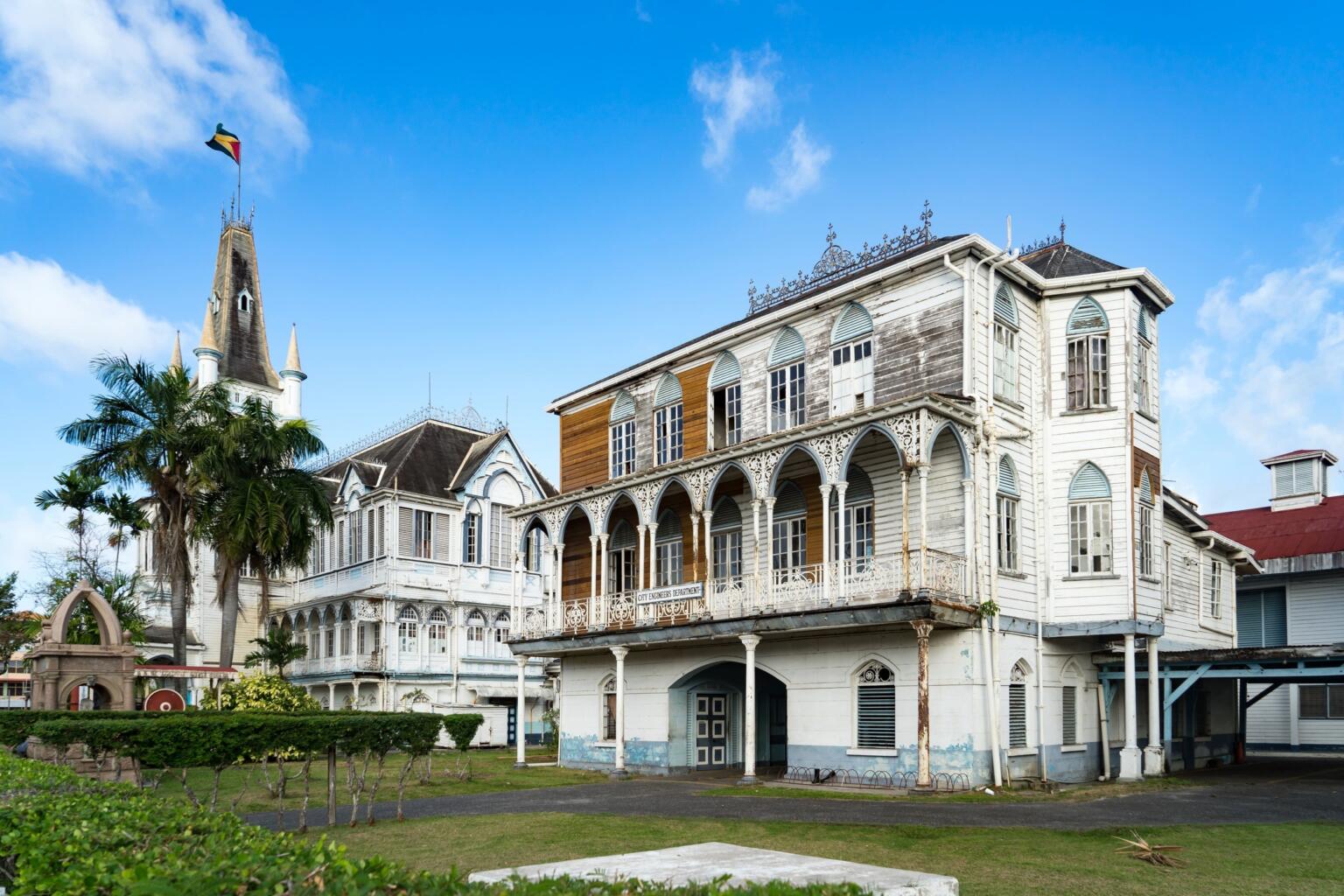
We can’t say that Guyana is the safest destination to take your children.
Lacking both the big attractions and infrastructure of other countries, there is not going to be a lot to entertain children.
However, if you are an adventurous family with kids who like to get out and about to enjoy nature, then Guyana definitely does have nature!
From the incredible Kaieteur Falls to the Iwokrama Rainforest, and a whole lot of fun, rustic lodgings to stay in and activities like river trips, it’s fair to say that actually Guyana is a pretty cool destination for a family.
If your kids are all about running wild in the great outdoors and learning about new cultures, then Guyana could be the destination for you.
Guyana has two rainy seasons: around May to mid-August and again from December to January. The hottest months usually occur between August and October. A good time to go to escape the heat and the rain would be at the end of one of the rainy seasons; it’s during these times when Guyana’s incredible waterfalls are at their prime, too.
Food in Guyana is a big mix of cultures and there’s a lot to choose from. It shouldn’t be too tricky getting something simple cooked for your children.
Georgetown is not the best destination to travel to with children. It’s not easy to navigate, there aren’t many sidewalks and lots of traffic. Spend more time in nature.
Bear in mind also that Guyana is not a budget destination. To enjoy it fully with your children, you’re going to want to have a decent budget to have a comfortable time. It is possible to do inexpensively, but doing so as a family means you’ll miss out on eco-lodges, community-based tourism projects and some in-depth tours.
Is it safe to drive in Guyana?
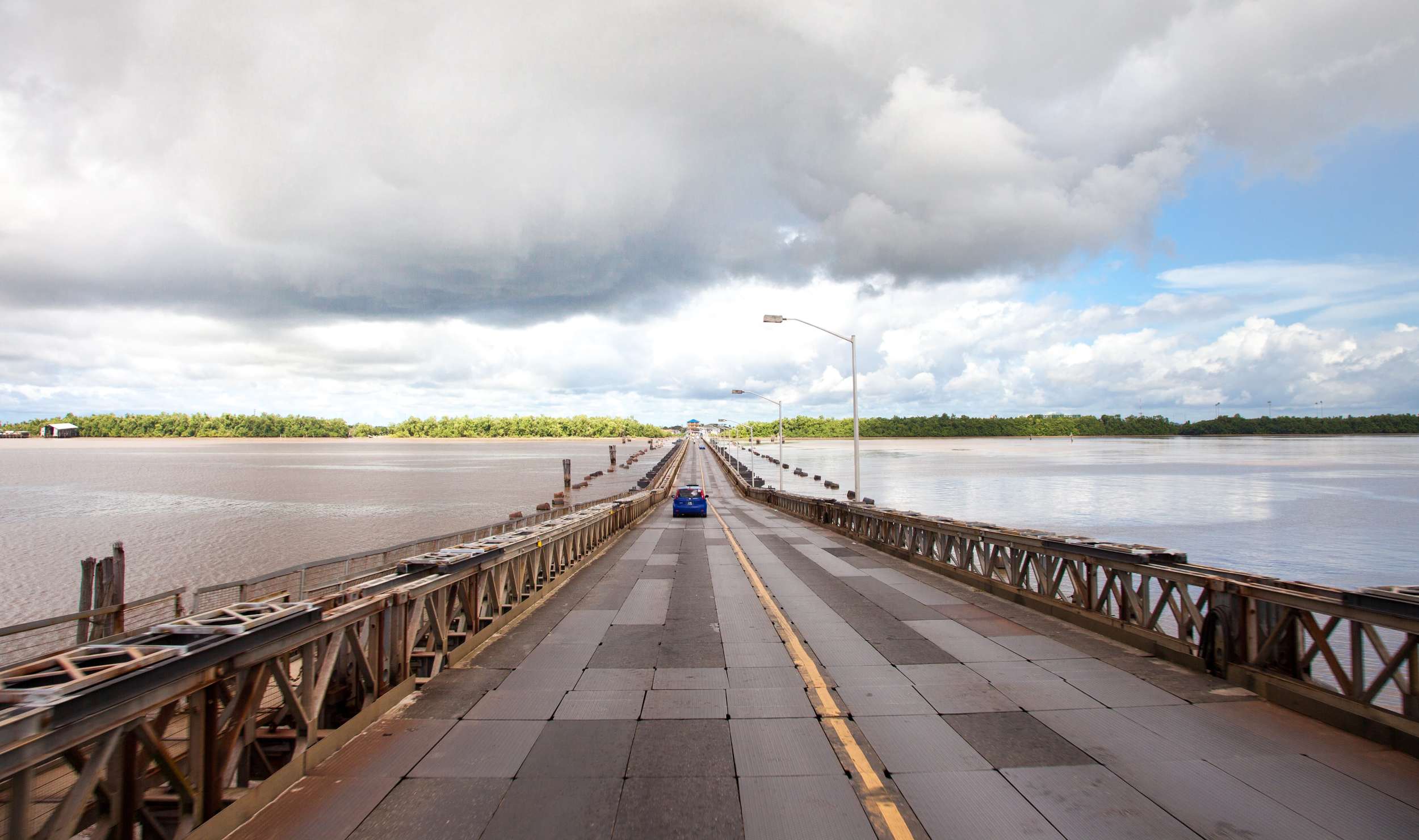
Driving is possible in Guyana, but it could be very hard work.
If you’re looking for a country to embark on your first bit of road-tripping abroad, we would not recommend Guyana – at all. There’s a lot of hazards, poorly maintained roads, inadequate street lighting, and more.
If you are someone with a lot of experience driving abroad and who is also a confident driver, then go for it. You can hire a car from a reputable company in Georgetown – you may need an international driving permit.
There are a lot of bad driving habits in Guyana, including reckless drivers, speeding, sudden turnings without any signals, breaking rules in general, and tailgating. Also, there are livestock and pedestrians on the road.
The quality of the roads will vary throughout the country. Georgetown, for example, in 2007 updated to a more modern road network In the capital, you can expect driving laws to be enforced. In rural areas, this is not so much the case. Road laws are rarely enforced in villages and towns, helping to make them especially hazardous places to drive.
If you are planning to self-drive in Guyana, it is definitely not a good idea to drive anywhere at night time. Whether it’s in Georgetown or elsewhere, just don’t do it; it can be particularly dangerous. It’s not well lit, pedestrians and livestock use roads freely, other cars blind you with full-beams and there is the risk of carjacking.
Another way to get around if you are keen on driving is Jeep rental. You can hire them out directly from lodges, and a driver will drive you around in a 4×4. Though expensive, they are a good way to get around.
All in all, we would not really say that it is safe to drive in Guyana.
Is Uber safe in Guyana?
Uber has not made its way to Guyana – and who knows when it will.
For now, you will have to make do with using taxis to get around…
Are taxis safe in Guyana?
Taxis, although sometimes a little bit risky, are probably the safest way to get around Georgetown and other places in Guyana.
You should make it a point to not hail a taxi off the street – that increases the chance of getting an unlicensed cab and being a target of crime. Instead, call to book taxis in advance; use only reputable companies recommended by your accommodation. To spot a licensed taxi, look at the numberplate: They all begin with the letter “H”.
When you arrive at the airport, be aware that you will be hassled by taxi drivers. Either make sure your accommodation has arranged transport for you in advance or – if you are relying on a taxi – use only the official licensed airport taxis. These drivers can be identified by the official IDs that will be attached to the pocket of their shirt.
Another time you may want to take a taxi is between Georgetown and another destination on the coast. It’s safer than a bus or minibus, though will cost a fair bit more.
Fares should be around G$400-500 for average trips around Georgetown and doesn’t increase with the number of people getting into the cab.
There are set prices for different destinations; for example, from the airport into the capital has a set rate.
Yellow taxis have the best reputation. Once you have found a driver that you like, and that you trust, you can ask for their number to call them directly. Tipping is welcome and usually gets you good service.
All in all, taxis are safe in Guyana. And comfortable.
Is public transportation in Guyana safe?
Buses comprise the main mode of public transport used to get around the country. These, however, do come with a certain level of risk.
Minibuses are driven quite recklessly. In fact, according to the UK government, they are “responsible for the majority of road accidents in Guyana.” On the plus side, they’re cheap to use.
You can pick up a minibus from Georgetown and travel either out to suburbs or to further-flung destinations along the coast. You could even do a long-distance overnight on the country’s only main road from Georgetown to Lethem; it takes 15-20 hours and leaves daily.
Make sure to read up on the operators that run the long-distance buses if you do want to take one, be extra vigilant and keep your belongings close to you.
As for boats, there is a regular ferry service that crosses the Essequibo River between Charity and Bartica. If river crossing like this, research a reputable company.
If you are going to be crossing between Guyana and Suriname on the Corentine River, only use scheduled ferry services. A water taxi in this instance can actually be illegal and lead to arrest.
There are scheduled daily flights and charter services to interior locations. From Georgetown, the tickets usually have to book through a local travel agency in advance rather than online.
There is a list of airlines that have been audited by the International Air Transport Association, which you can find on their website.
Basically there are not a whole lot of options for you to choose from when considering the public transport on offer in Guyana. Research, research, research.
If, on the other hand, you have chosen to embark on a tour, then you won’t need to worry about any public transport really.
Is the food in Guyana safe?
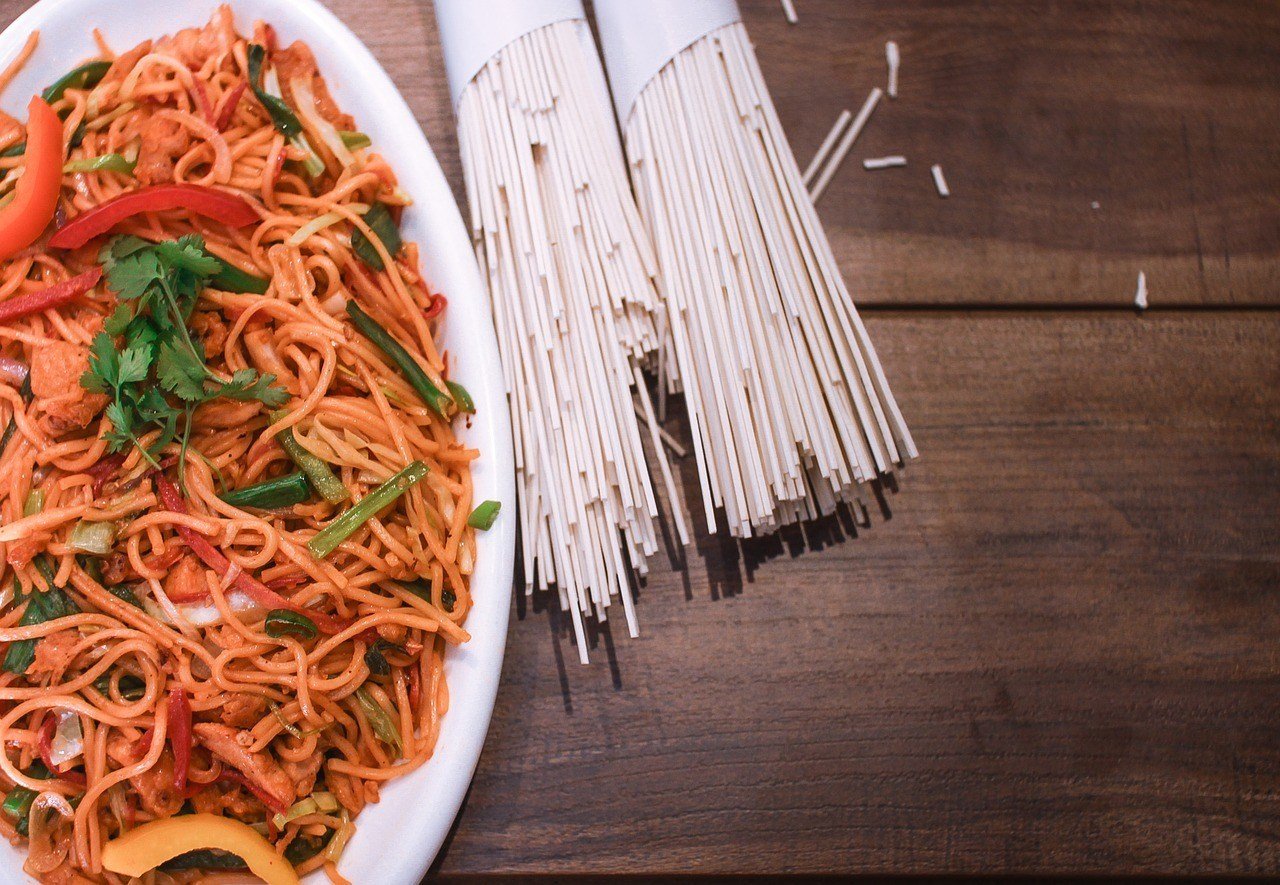
Guyana is a melting pot of a country with a selection of tasty food to match. With all that influence from different cultures, there’s British, Indian and Chinese influences as well as Caribbean, too. It is a culturally Caribbean country, after all.
While it’s true that in Georgetown you will able to enjoy a relatively varied culinary scene, it’s not quite the same as in neighbouring Suriname. However, there is still a lot on offer, with a fiery kick to many dishes here and there.
To help you navigate all Guyana’s gastronomy, here are some pointers…
- Don’t miss out on Indian cuisine – Indian food is probably some of the most popular in the country. From roadside roti to full-on homey curries, Indian food is a great option as it will familiar to most travellers, but with a Guyanese twist. In Georgetown, one of the most popular spots in town is Shanta’s.
- Search out chow mein – The Chinese-influenced dish is pretty much a staple and can be found on most menus. It’s a great option if you are looking for something simple to eat and are worried about upsetting your stomach. Chow mein is rarely spicy, cooked at high heat and served fresh, and is often easy for vegetarians.
- Head for the hotels – If you are struggling with the more local end of the food scene spectrum in Guyana, then head to the hotels. These usually cater to business travellers and will most likely have a good selection of international dishes in their restaurants, albeit in a usually high-end setting.
- Hop on a food tour – Ones that operate around Georgetown (like Backyard Cafe we mentioned earlier) will show you the lively markets of the capital and how to cook Guyanese fare using fresh produce. The best kind of souvenir to take home, if you ask us!
- Ask for local advice – Ask the staff at your accommodation for their foodie recommendations. Discovering Georgetown through what the locals like in terms of food is a fun way to do it.
- Make sure the food you eat is fresh – If you can see the food being freshly prepared in front of you, that’s a good sign. Things that have been sitting around for a long while, or look like they have been, are best avoided if you don’t want an upset stomach.
- Don’t be afraid of street food – Street food in Guyana is a great option; it’s popular and offers an insight into varied food culture. Often there are lines for the stalls, which means a quick turnover and furiously hot cooking. There are regulations that street food vendors need to follow, so often they will be up to standard.
- Be careful of seafood – If fish or shellfish smell weird, or taste weird, then don’t eat them. Getting food poisoning from seafood is really not fun at all.
- Ease yourself in – You may want to eat everything when you’re in the capital, but you should go easy at first. A drastic change in diet can be an easy route to an upset stomach or a case of travellers diarrhoea, so take it slow at first.
- Wash your hands – Always ensure that your hands are clean before you eat; a lot of the time you will be eating with your hands anyway, so that’s all the more reason to scrub those mitts. Bring hand sanitiser, as there won’t often be somewhere to wash your hands (especially with street food).
There you have it – some of our top foodie tips for Guyana. With all that culture and an abundance of nature, it’s no wonder that Guyanese cuisine has some pretty delicious dishes waiting for you.
There may be some pretty strange things on offer – cow heel soup, for example – but there’s some wonderful stuff here too, fish dishes, rice dishes, curries and even El Dorado Rum, considered one of the best in the world.
Guyana is even famous for sugar, with Demerara sugar named after the region of the same name!
Can you drink the water in Guyana?
It is not a good idea to drink the water in Guyana – it is not safe.
It’s best to stick to bottled water, filtered water, or boil the water yourself (one minute, vigorously). You could also bring along a refillable water bottle, some of which come with their own built-in water purifiers, or a water purifier like the SteriPen.
Is Guyana safe to live?
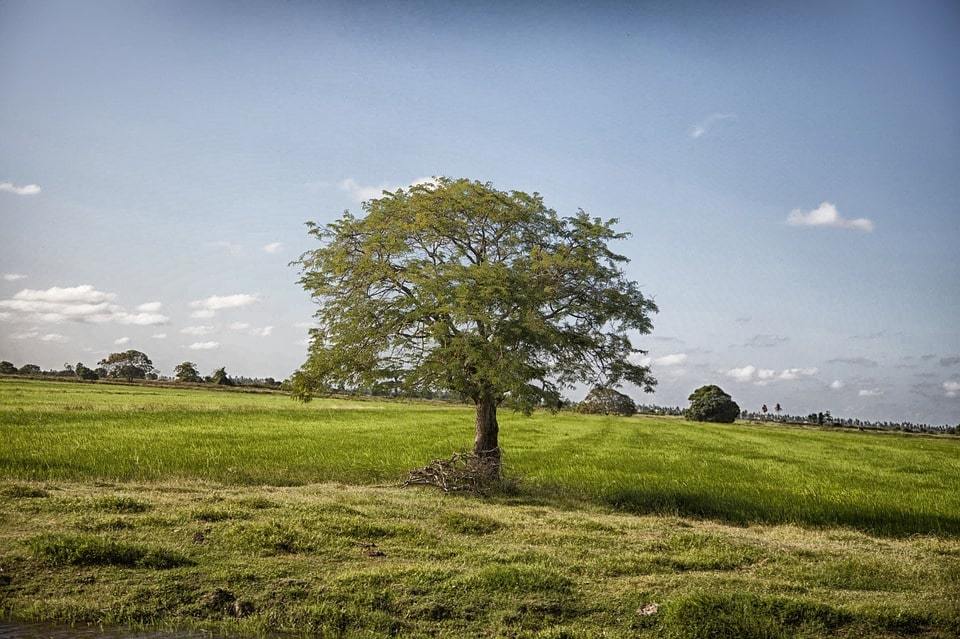
Guyana is a stunning country that has a lot to offer. For us, it would mainly be for nature and the interesting culture going on here.
Laid-back and vibrant equally, Guyana is an exciting place to live full of natural beauty and warm people. However, that does mean that it’s going to be easy to live there.
Guyana has a high crime rate, corruption, poor road safety and lack of public transportation network to name just a few.
Probably the best place to base yourself is in Georgetown. There’s a lot of potential in the capital, of course, but it is also a hub for food, drink and entertainment.
Living in Guyana means having to get adjusted to a different way of life. The pace is much slower, more low-key than you’re probably used to; people take time here to hang around. Things aren’t always organised, but there’s also so much paperwork and documents for any official moves you make, like setting up a business, getting a driving license or doing a tax return.
However, what you will get is that incredible untouched nature on your doorstep, ready to be explored whenever you feel like planning a trip.
You will also get to live in a country that seems to be on its way up economically. Tourism is on the rise, but it remains to be seen what effects that will have on Guyana (and its amazing nature).
There’s not one ethnic group that makes someone Guyanese – it’s a mix of ethnicities and cultures, so people won’t really bat an eyelid at the addition of an expat.
As ever, do your research and talk to other expats and get a feel for living in Guyana.

A new country, a new contract, a new piece of plastic – booooring. Instead, buy an eSIM!
Jetpac eSIMs work just like an app: you download it, pick your plan, and BOOM! You’re connected the minute you land. It’s that easy.
Read about how e-Sims work or click below to see one of the top eSIM providers on the market and ditch the plastic.
Grab an eSIM!How is healthcare in Guyana?
Healthcare in Guyana varies from region to region, but in general, the facilities are very limited and below Western standards of quality and care.
It is, therefore, imperative that you have comprehensive medical travel insurance for your trip to Guyana. Any serious ailment will mean you need to evacuate, and that is pricey.
If you are in Georgetown, a selection of hospitals and medical facilities can be found. The private ones are of better quality and are regulated according to strict codes.
The costs of healthcare in Guyana are generally low, and you may need to pay for medical treatment when you are there. This is because insurance may not always be accepted at first, leaving you to settle that with your insurance company at a later date.
If you have a medical emergency during your time in Guyana, you should dial 913.
Outside of the capital, especially in more remote areas, medical facilities are almost non-existent. Poor sanitation and a lack of qualified specialists mean that, beyond minor treatment, there’s not a lot that can be done in most areas outside the capital.
It is also important to note that in a 2016 report, it was estimated that approximately 8,500 people in Guyana were living in HIV. Take steps to ensure your safety, and take appropriate precautions to avoid exposure.
In Georgetown, two hospitals of note are Georgetown Hospital and St Joseph’s Mercy Hospital. In doubt, ask at your accommodation, or contact your embassy.
Though pharmacies are few and far between outside of Georgetown, you can find a fair selection in the capital. However, it is advised that you bring enough medication with you if you need it. You should also bring a well-stocked first-aid kit, including things like paracetamol and anti-diarrhoea medication.
FAQ about Staying Safe in Guyana
Here are some quick answers to common questions about safety in Guyana.
Final thoughts on the safety of Guyana
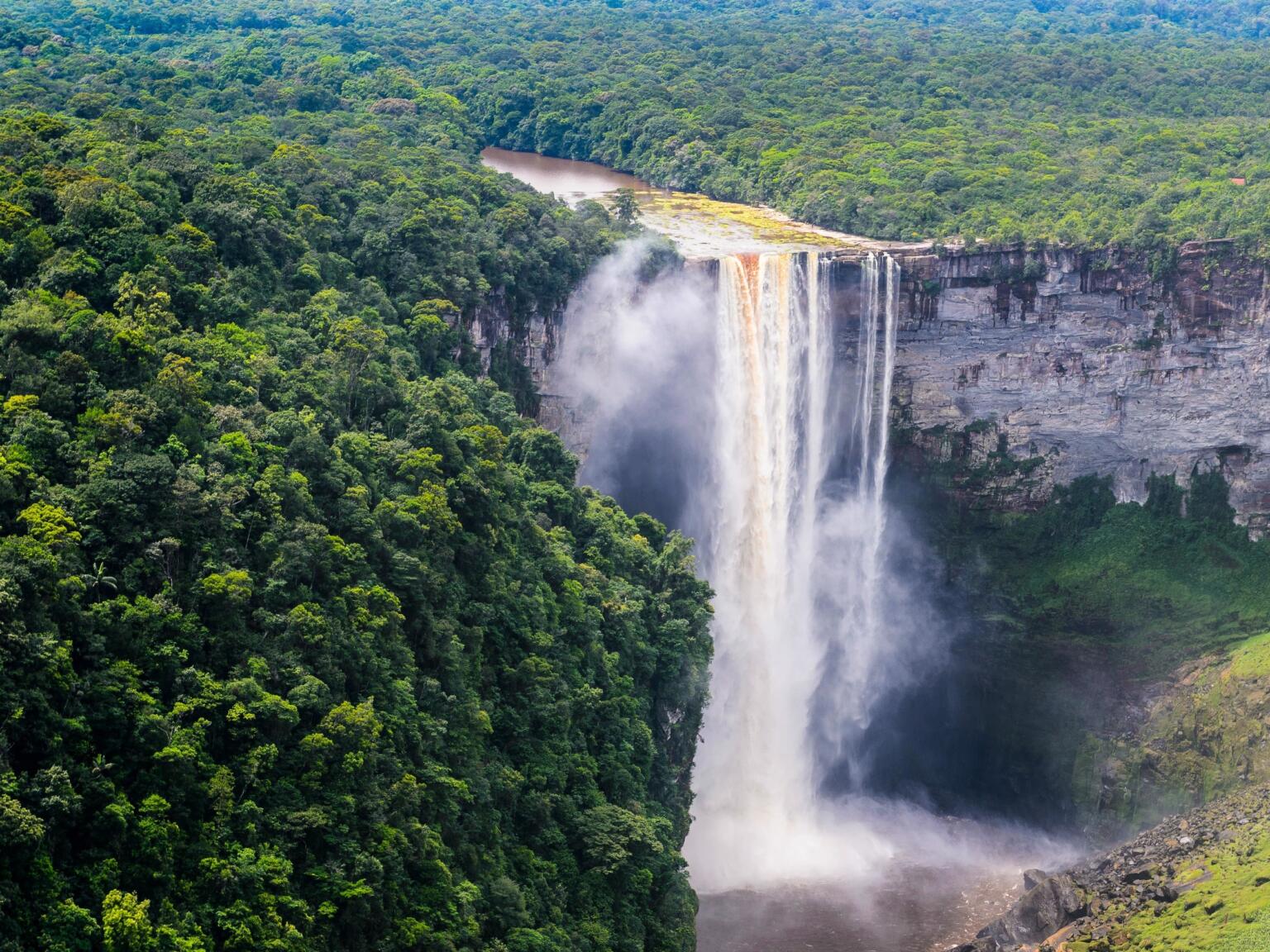
Guyana is not very well known, but when people first discover it for themselves they find out two things: it’s rich in wildlife, and it has a high crime rate. Still very much off the beaten track – though that may change in the next few years – the easiest way to see Guyana is through a tour.
For the adventurous, well-journeyed travellers out there looking for a challenge, however, Guyana is definitely doable.
Buy Us a Coffee!
A couple of you lovely readers suggested we set up a tip jar for direct support as an alternative to booking through our links. So we created one!
You can now buy The Broke Backpacker a coffee. If you like and use our content to plan your trips, it’s a much appreciated way to show appreciation 🙂


